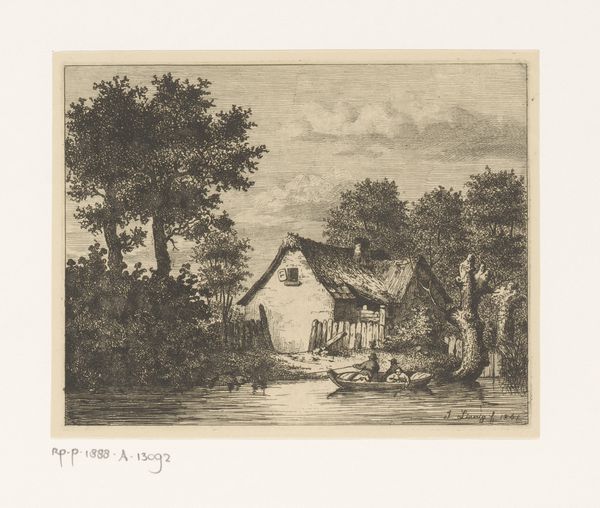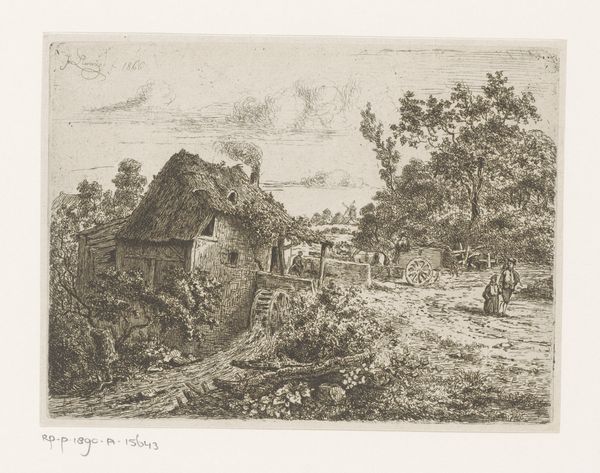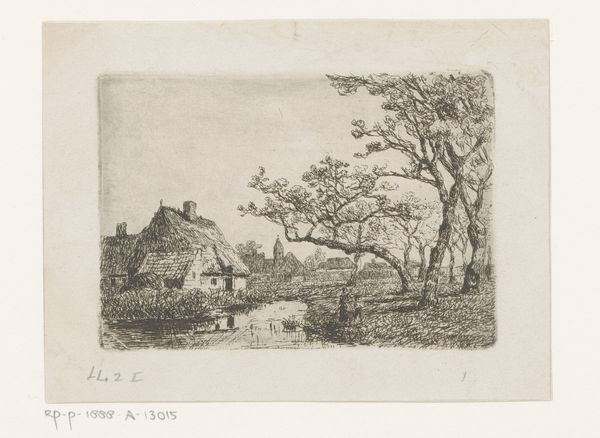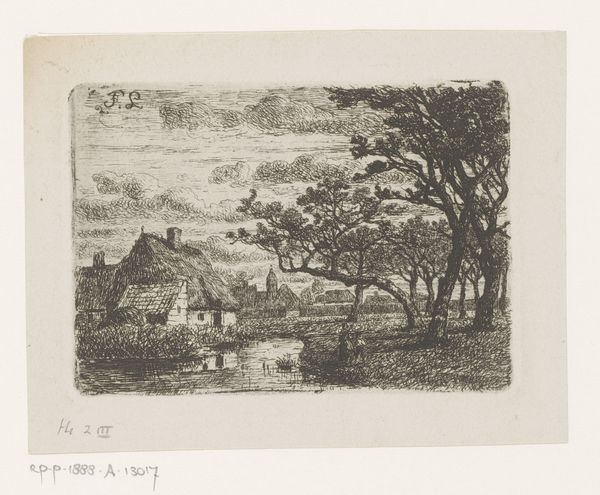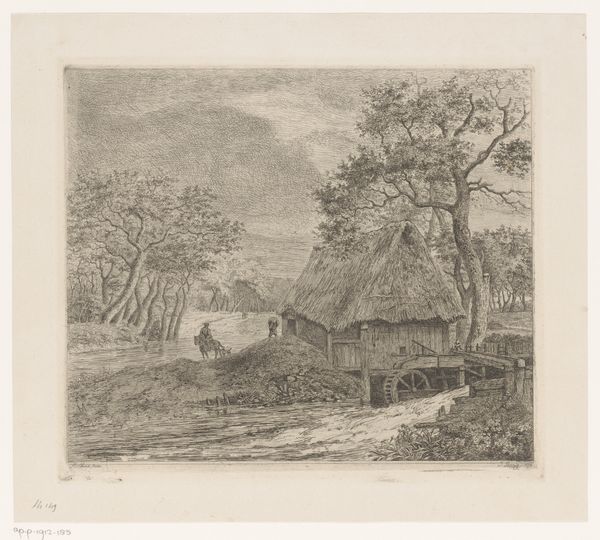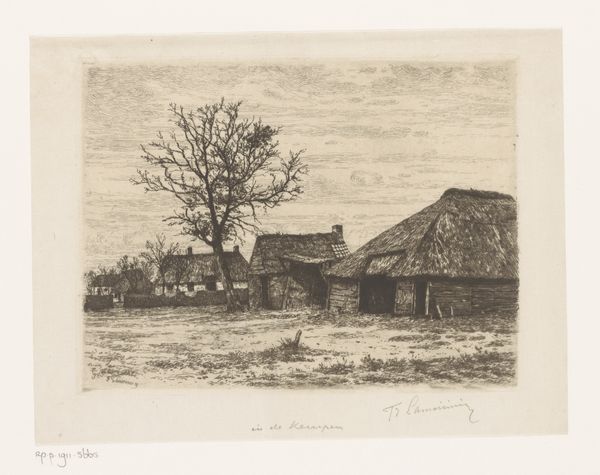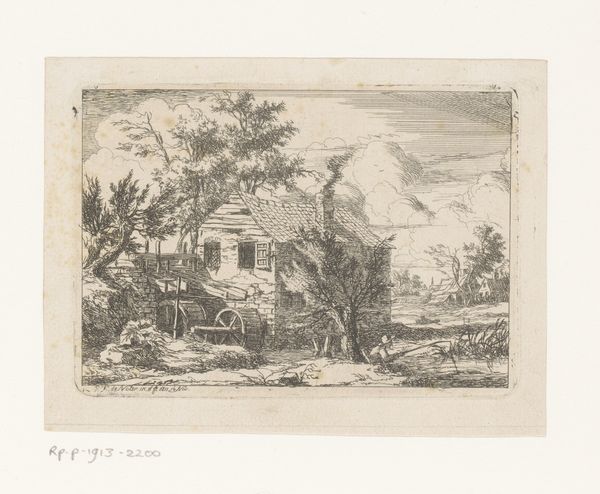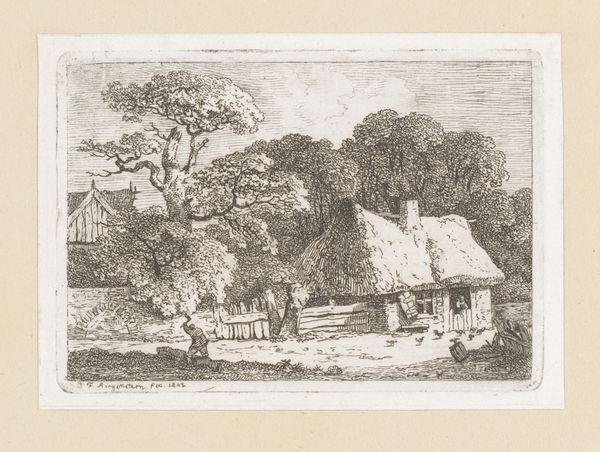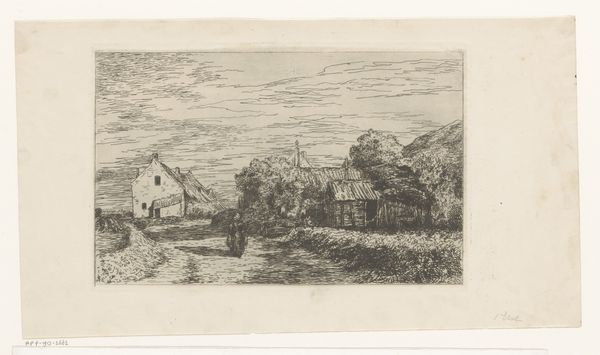
print, engraving
# print
#
landscape
#
genre-painting
#
engraving
#
realism
Dimensions: height 137 mm, width 155 mm
Copyright: Rijks Museum: Open Domain
Editor: Here we have Jean Théodore Joseph Linnig's "Watermolen in Tienen," an 1870 engraving. It feels so serene, almost idyllic. There’s a quiet dignity in this humble scene. What do you see in this piece, beyond the surface? Curator: I see a representation of labor and the natural world intertwined. This mill is not just a picturesque element; it represents a specific kind of labor that's deeply rooted in a particular social structure and environment. Consider, for example, how this image, produced in 1870, is reflective of a period of profound transition and economic shift. Do you think that perhaps this rendering of rural life might romanticize pre-industrial modes of working? Editor: That’s interesting. It’s easy to get lost in the details of the landscape and the charming depiction of the mill. Perhaps there's an element of idealization, given the wider historical context you mentioned. Are there further aspects we should consider about the way labor and gender intersect here? I note that a woman appears near the house... Curator: Yes, indeed. It's also essential to question whose labor is visible and whose is rendered invisible. Consider the gendered division of labor at the time, where the woman is positioned outside, performing tasks typically deemed 'unskilled' compared to the mill worker, whose toil involves skilled mechanical labour inside, though the scene doesn’t explicitly show him. In this case the context provides layers of meanings of labor. It is this gendered disparity in value that the engraving obscures and in many respects perpetuates through idealizing composition. Editor: I never considered how the image's composition is intertwined with the societal dynamics. So the way the woman is positioned versus the absent worker changes everything. Thanks for shining light on what the print conceals! Curator: Precisely. These artworks open up spaces for us to reflect critically on our present. The layers, aren't they? Editor: They really are. Thanks for sharing your insight!
Comments
No comments
Be the first to comment and join the conversation on the ultimate creative platform.
